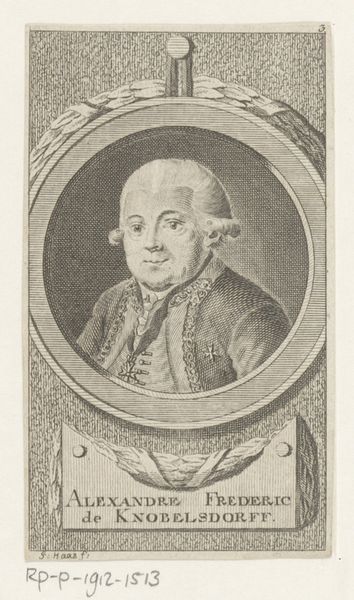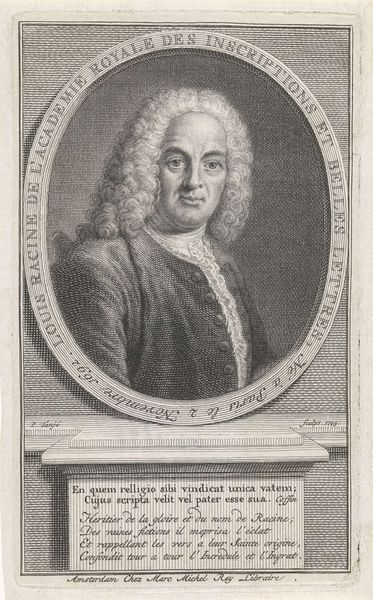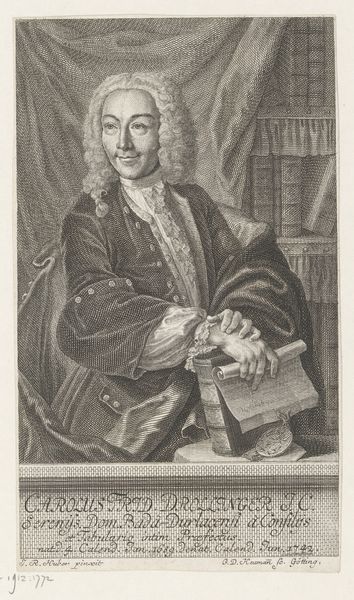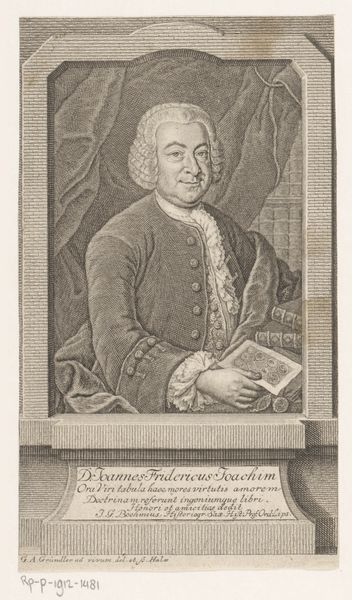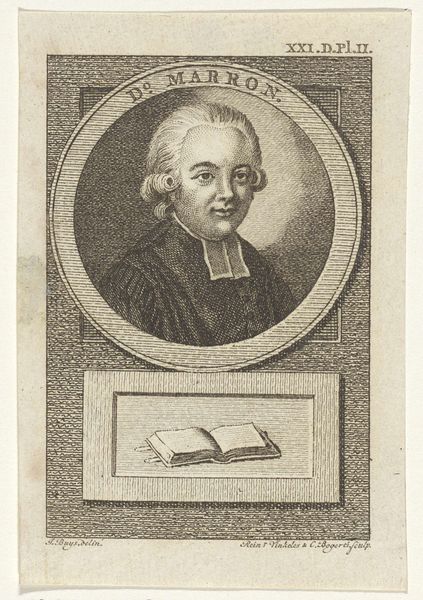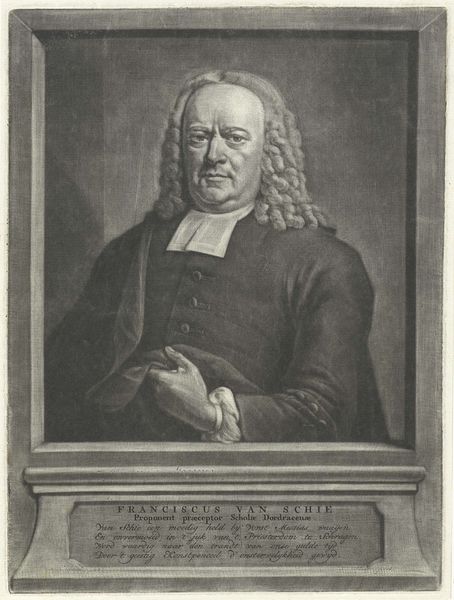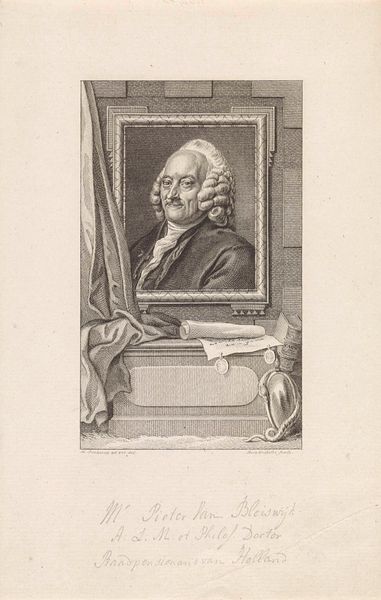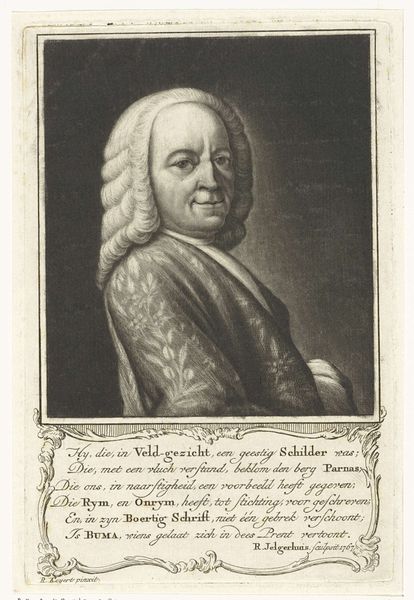
drawing, paper, pencil, graphite
#
portrait
#
pencil drawn
#
drawing
#
neoclacissism
#
charcoal drawing
#
paper
#
pencil drawing
#
pencil
#
graphite
#
portrait drawing
Dimensions: height 178 mm, width 124 mm
Copyright: Rijks Museum: Open Domain
Aert Schouman made this portrait of Pieter van Bleiswijk in 1787 using etching. It raises questions about the public role of portraiture. This image makes meaning through established visual codes and historical associations. For instance, Bleiswijk is shown in a wig, which was then an indispensable article of formal dress. He is holding a letter and the quill alludes to his status as a scholar. At the time this portrait was made, the Dutch Republic was dominated by an oligarchy of rich merchants. Bleiswijk was part of the regent class and the three stars on the top of the portrait refer to Leiden, where he was mayor for many years. The image is consciously conservative and affirms the hierarchies of Dutch society. Historians can draw on a range of documentary sources to understand the image better, from genealogical records to histories of local government. By understanding the social and institutional context, we can recognize how art embodies power relations and reflect on the politics of imagery.
Comments
No comments
Be the first to comment and join the conversation on the ultimate creative platform.
